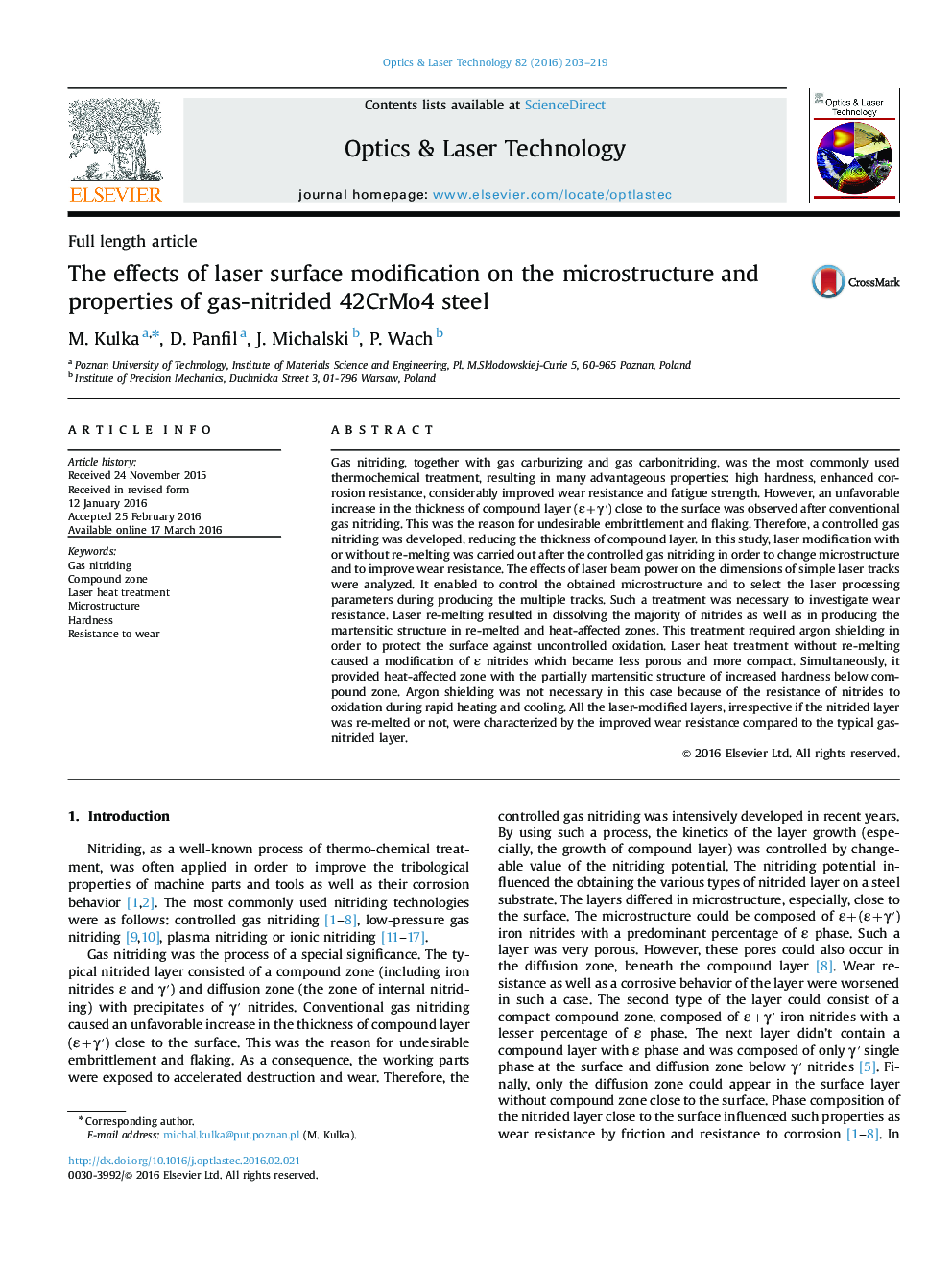| کد مقاله | کد نشریه | سال انتشار | مقاله انگلیسی | نسخه تمام متن |
|---|---|---|---|---|
| 733390 | 1461617 | 2016 | 17 صفحه PDF | دانلود رایگان |

• Laser heat treatment (LHT) with and without re-melting was applied to nitrided layer.
• Effects of LHT parameters on the dimensions of simple laser tracks were analyzed.
• Laser re-melting dissolved the nitrides in austenite and resulted in harder martensitic microstructure.
• LHT without re-melting diminished porosity of ε nitrides and diffusion zone hardened.
• Improved wear resistance was obtained irrespective of the type of laser modification.
Gas nitriding, together with gas carburizing and gas carbonitriding, was the most commonly used thermochemical treatment, resulting in many advantageous properties: high hardness, enhanced corrosion resistance, considerably improved wear resistance and fatigue strength. However, an unfavorable increase in the thickness of compound layer (ε+γ′) close to the surface was observed after conventional gas nitriding. This was the reason for undesirable embrittlement and flaking. Therefore, a controlled gas nitriding was developed, reducing the thickness of compound layer. In this study, laser modification with or without re-melting was carried out after the controlled gas nitriding in order to change microstructure and to improve wear resistance. The effects of laser beam power on the dimensions of simple laser tracks were analyzed. It enabled to control the obtained microstructure and to select the laser processing parameters during producing the multiple tracks. Such a treatment was necessary to investigate wear resistance. Laser re-melting resulted in dissolving the majority of nitrides as well as in producing the martensitic structure in re-melted and heat-affected zones. This treatment required argon shielding in order to protect the surface against uncontrolled oxidation. Laser heat treatment without re-melting caused a modification of ε nitrides which became less porous and more compact. Simultaneously, it provided heat-affected zone with the partially martensitic structure of increased hardness below compound zone. Argon shielding was not necessary in this case because of the resistance of nitrides to oxidation during rapid heating and cooling. All the laser-modified layers, irrespective if the nitrided layer was re-melted or not, were characterized by the improved wear resistance compared to the typical gas-nitrided layer.
Journal: Optics & Laser Technology - Volume 82, August 2016, Pages 203–219